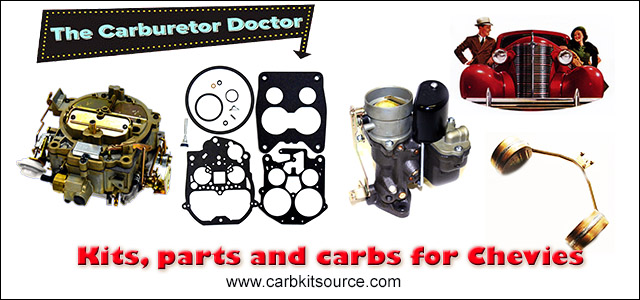The ABCs of Carburetion
UM-900 (1959)
Page 13 of 19
|
|
|||
|
CARBURETOR SYSTEMS Continued
|
|||
|
|
|||
 |
closed simply cuts
down the air supply and raises the vacuum applied to the fuel outlets,
so that more than usual fuel may be drawn into the cold engine.
The manual choke
is, of course, controlled by
the driver; he can simply set it where the engine runs best as
it starts and warms up.
Automatic chokes
are becoming more and more the accepted choking mechanism; in
general, here's how they work: An automatic choke contains two
opposing forces: thermostatic coil tension acts to close the choke
valve and vacuum pull on the choke piston acts to open it. A cold coil
will hold the choke closed against the vacuum pull. Warm air is
brought to the choke coil through a heat tube open to fresh air near
the exhaust manifold. As the coil is heated, it "relaxes" and allows
the vacuum pull on the piston to open the choke valve and hold it
there. By careful design and calibration, automatic chokes are made
to furnish the correct choke action during the start and warm-up
period.
|
||
|
CHOKE SYSTEM
The Choke System
supplies the rich mixtures we saw were needed for the starting and
warm-up of a cold engine. The choke valve when
|
|||
|
|
|||
 |
|||
|
|
|||
|
SUMMARY
|
|||
|
|
|||
|
The upshot of it all
is that the carburetor has to be an all-around star performer at the
beck
call of the
automobile driver. With today's engine and fuels, the modern
|
carburetor is a far
cry from its ancestors of just a few years back, but reduced to its
basic functions, it still follows the fundamental principles of
carburetion.
|
||
|
|
|||
|
13
|
|||
|
|
|||
